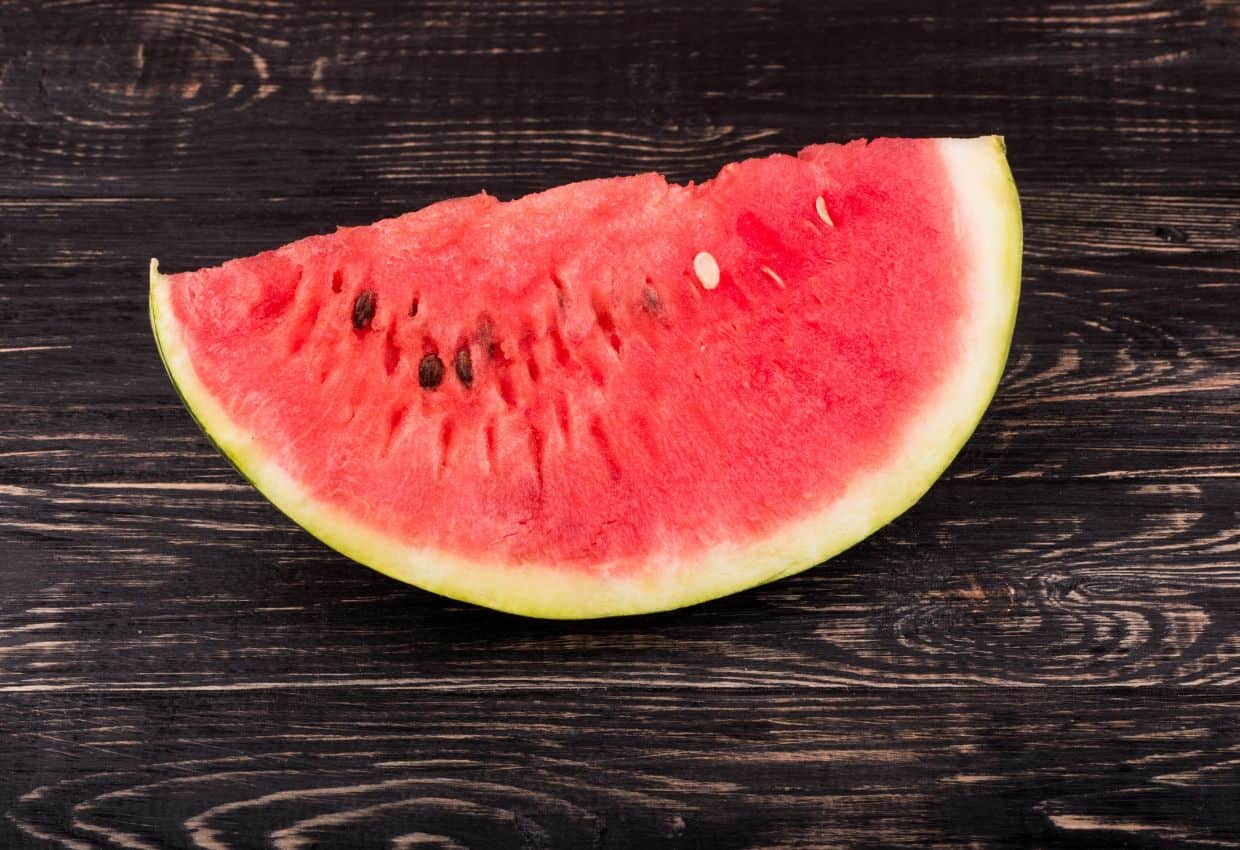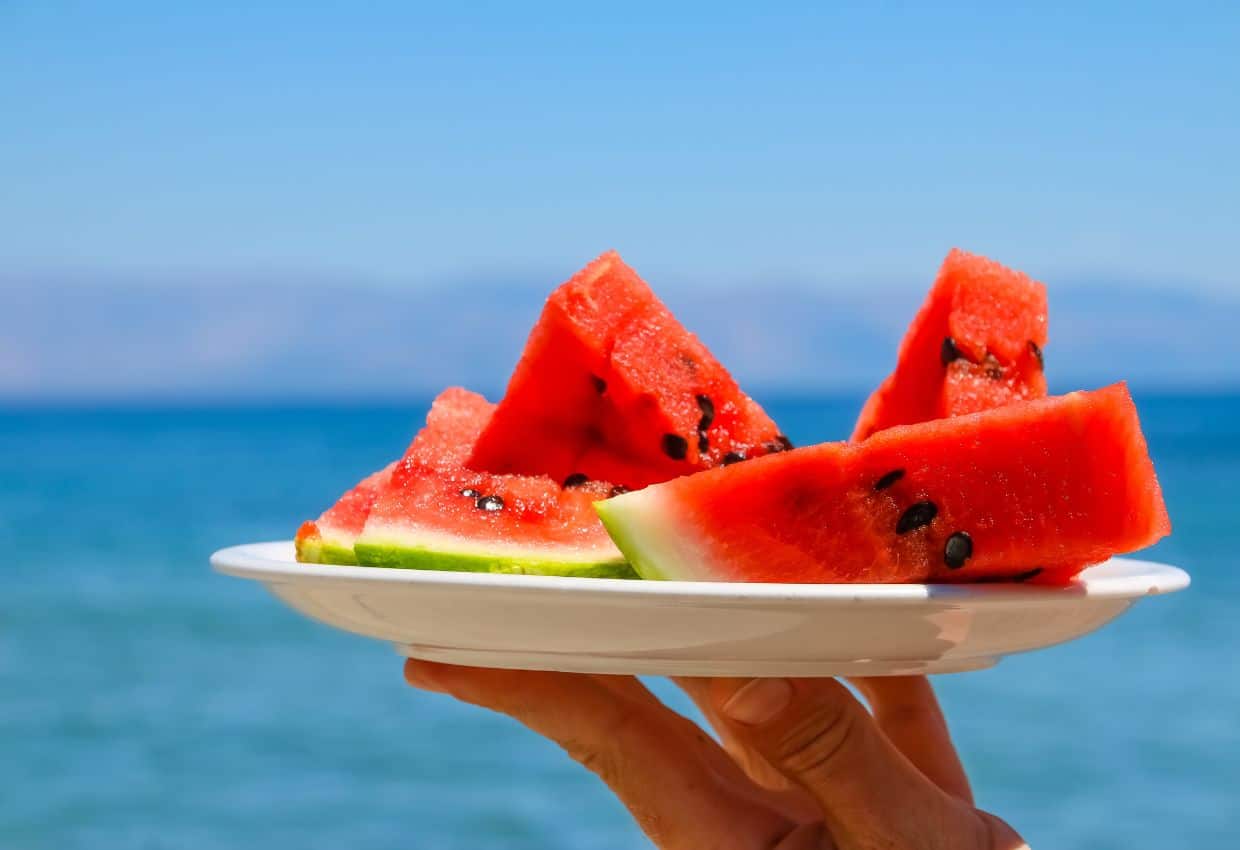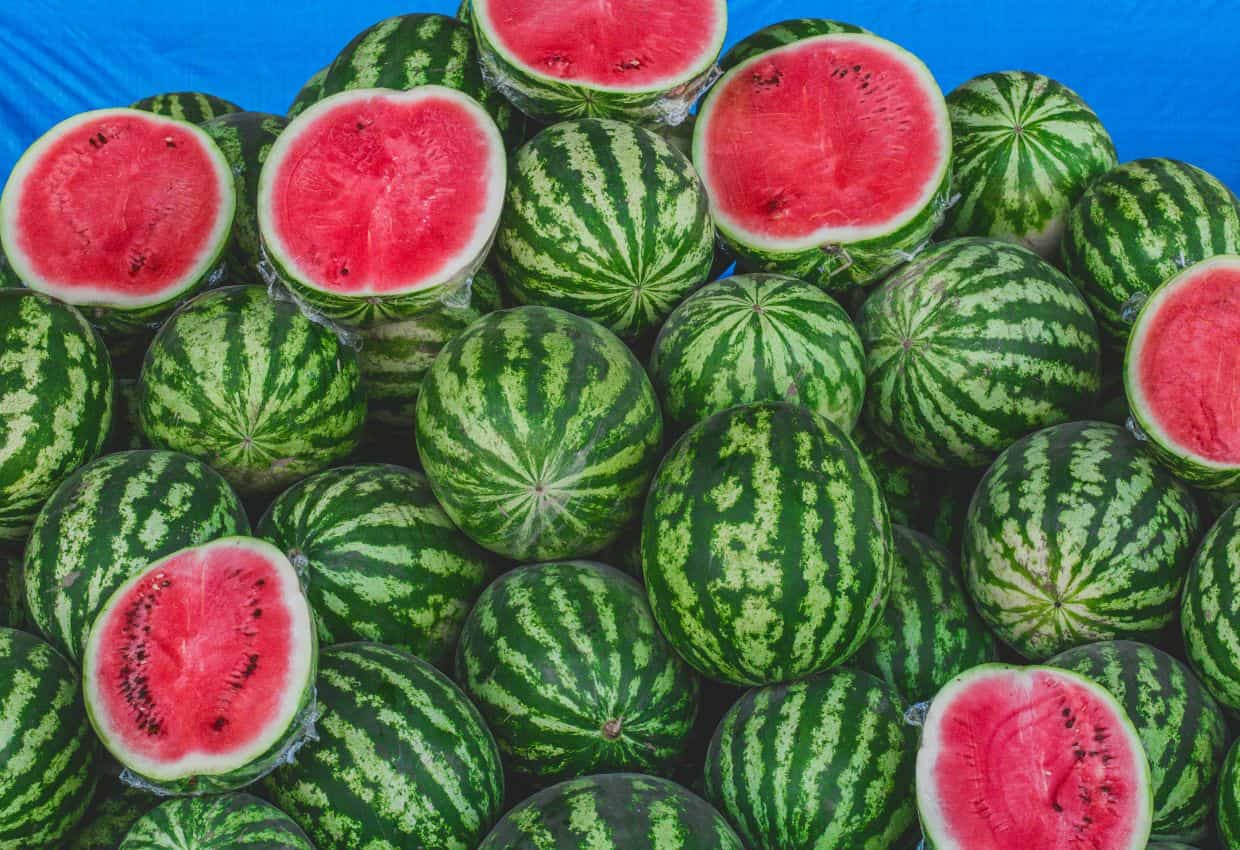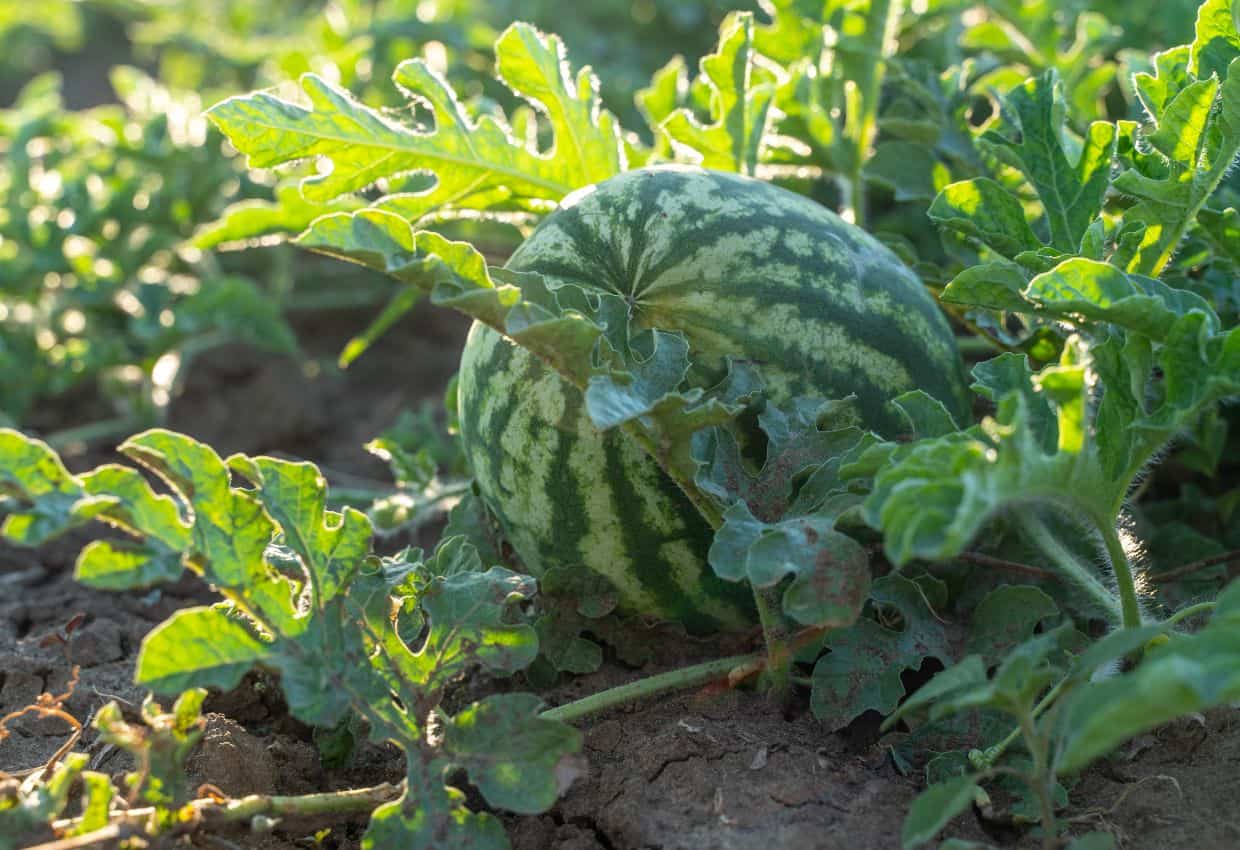Watermelons are the quintessential summer fruit, known for their refreshing sweetness and juicy flesh. But with so many options available, how do you pick the best watermelon?

What makes a good watermelon?
When it comes to selecting a watermelon, appearance is a good starting point. A good watermelon is a true delight for the taste buds, offering a sensational experience that is hard to resist.
A good watermelon has well-balanced flavor, with just the right amount of sweetness accompanied by a subtle hint of natural acidity. You want each juicy bite to have crisp and firm texture, providing a satisfying crunch that adds to the overall enjoyment.
Whether you plan to make watermelon granita or enjoy sliced watermelon on a picnic, you want a sweet, juicy watermelon like you remember from childhood.

Most bad watermelons you find at the grocery store aren’t truly rotten. They’re simply mediocre.
They may taste dull or even bland, leaving your taste buds longing for the expected sweetness. Instead of the anticipated burst of refreshing liquid, you bite into a dry and unsatisfying texture.
In some cases, a bad watermelon can have a mealy or mushy consistency, further adding to the unpleasantness. The flavor may also be off, with a sour or unpleasant taste, indicating that the watermelon is overripe or spoiled.
When you look for the perfect watermelon, you want to look for five characteristics:
- Shape
- Skin texture
- Relative weight
- Stripes on the skin
- Field spot
Filled with appetizers, salads, sides, mains and desserts, Food Drink Life's cookbook will become your favorite!
- Easy and delicious recipes from a variety of top chefs and recipe developers.
- Bright, colorful pictures on every page.
- Printer-friendly recipes that you can download instantly to your device.
- Printable shopping list and a kitchen conversion sheet.
What shape do you want for a watermelon?
Choose a watermelon that is symmetrical and uniform in shape. Irregularities or asymmetry might indicate an uneven ripening process.
Opting for a symmetrically shaped watermelon increases the likelihood of a well-rounded flavor and texture profile.
Ideally, you want a watermelon with consistent thickness throughout. If you notice any bulges or indentations, it could suggest uneven ripening or the presence of empty cavities. A uniformly shaped watermelon ensures that you get the maximum amount of juicy, sweet flesh with every slice.
A watermelon that is round or oval-shaped tends to have a higher chance of having a well-developed, juicy center. On the other hand, irregularly shaped or elongated watermelons may have less desirable flesh-to-rind ratio, resulting in a less satisfying eating experience.
What should you look for in terms of the skin texture?
Look for a watermelon with a firm, smooth skin. Avoid melons with bruises, cuts or dents, as they may be overripe or damaged.
Contrary to what you may expect, a ripe watermelon will have a matte or dull skin finish, rather than a shiny or glossy appearance. This is especially true for the darker green parts of the skin. The lack of shine indicates that the watermelon has reached its peak ripeness and is ready for you to enjoy it.
Gently press your fingers against the skin, it should offer a slight resistance but still feel relatively firm. If the skin feels overly soft or mushy, it is an indication of an overripe or potentially spoiled watermelon. On the other hand, a hard or rigid skin suggests an underripe fruit that may lack the desired juiciness.
Why does the watermelon weight matter?
Weight is a crucial factor when it comes to selecting a watermelon. A heavier melon indicates a higher water content, which means it will be juicier and more flavorful.
Keep in mind that you have to think about weight relatively. Obviously a larger melon will weight more than a significantly smaller melon. You want a higher weight ratio for the size, not simply the heaviest watermelon.
In the store, pick up a few watermelons of similar size and compare their weights. Choose the heaviest one among them as it will likely be the juiciest.
A ripe watermelon should feel dense when you pick it up. If it feels light for its size, it may have dried out or be underripe. Both lead to a disappointing experience.

What do the stripes on a watermelon mean?
The stripes on a watermelon’s skin can provide valuable insight into its ripeness.
Look for watermelons with dark green stripes that have a high contrast with the lighter green stripes. This contrast indicates that the melon has had enough time to ripen fully.
Be sure you pick a watermelon with stripes that are evenly sized and well-defined across the melon. Uneven or faded stripes may be a sign of an underripe watermelon.
The thickness of the stripes can also reveal insights into the sugar accumulation within the watermelon. As the fruit ripens, it generates more sugar, which enhances its sweetness.
Thick and well-defined stripes indicate sugar accumulation, suggesting a sweeter and more flavorful watermelon. Thinner or indistinct stripes may suggest lower sugar content, leading to a less sweet or less ripe fruit.
Should your watermelon have a field spot?
The field spot, also known as the belly or ground spot, is the area where the watermelon was resting on the ground. It can offer valuable information about the fruit’s ripeness.

“The first thing I look for when buying a watermelon is a yellow spot on the bottom. This means the watermelon has been on the vine long enough to be ripe.”
— Jere’ Cassidy, One Hot Oven
A ripe watermelon will have a creamy yellow or orange-colored field spot. Avoid melons with a white or greenish field spot, as they are likely underripe.
The color of the field spot should be consistent across the entire area. An uneven or partially white field spot may indicate an uneven ripening process.
You also want a relatively large field spot. The larger the field spot, the longer the watermelon sat on the ground ripening rather than being picked before it was fully ripe.
Final thoughts
Picking the best watermelon doesn’t have to be a daunting task. By considering the appearance, weight, stripes and field spot, you can increase your chances of selecting a deliciously juicy melon.
The next time you’re at the grocery store or farmers’ market, use these tips to find the perfect watermelon and enjoy the best of what this delightful fruit has to offer.
Michelle Price is a food and travel writer at Honest and Truly who almost has an empty nest. She loves to provide both the inspiration and the confidence you need to help get you into the kitchen and on the road to enjoy new flavors and experiences.
